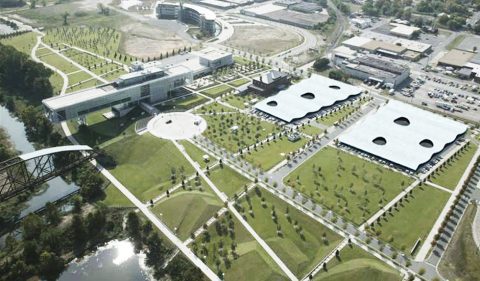
Renewable energy use protects health, habitat, and natural resources by reducing the pressures to build new power plants and related infrastructure. Opportunities to incorporate renewable energy production can be found in many institutional facilities and throughout existing urban spaces. Can such opportunities do more than simple generate energy? The Clinton Foundation seeks to be a leader in mitigating climate change by expanding the use of renewable energy at the LEED Platinum Clinton Presidential Center, with the ultimate goal of achieving “net zero” operations. Expanding renewable energy use at the Center offers a high-profile demonstration of the Obama Better Buildings Challenge, which the Clinton Foundation helped develop. Moreover, renewable installations directly support the growth of the clean energy industry. While solar energy is abundant, the relatively low efficiency of photovoltaic (PV) panels requires large areas to meet the energy needs for buildings. The Center currently employs a roof-mounted photovoltaic array to supply a small fraction of its annual power consumption (about 60 thousand out of a total of 9.9 million kWh). The existing PV arrays cover a large part of the roof, while the balance is a green roof – leaving little opportunity for PV expansion on the building. Ennead Lab studied options to provide abundant PV area on non-roof surfaces.
Project
Ennead Lab was asked to develop a stratefy for incorporating PV canopies over the Center's existing parking lot. Supported by steel-plate “trees” and lightweight, low-material tensile structures addressing the required spans of the parking below, our team's concept creates a sheltering structure which works within the surrounding park's geometries and scale.
The parking lot offers the necessarily large surface area for the PV arrays, with the added benefit of shading cars and pavement below. In addition, PV canopies are proposed for the existing Rock Island Railroad Bridge, now a pedestrian bridge, requiring minimal additional structural support.
Together, the proposals present innovative and expressive ways to provide an otherwise utilitarian power requirement, as befitting this high-profile site – and hopefully inspiring owners and designers of other new and existing buildings to think beyond the roof for PV installations.











